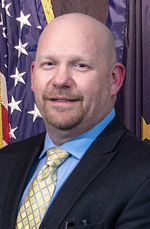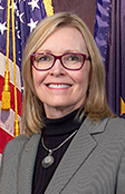In spite of state cuts, county to see no income tax increase
On Wednesday, the last day of budget hearings drew to a close with neither an increase in Local Income Tax (LIT) rates nor a reduction of the Rainy Day Fund to compensate for the shortfall of tax allocation from the state.
The Reporter spoke with Hamilton County Council Member At-Large Sue Maki, District 4 Member Ken Alexander, and District 2 County Council Member and Council President Amy Massillamany about the final day of hearings.
The day began with financial consultant Mike Reuter explaining that his investigation into the reduction in the state’s allocation of LIT funds to Hamilton County is still ongoing, but that he had discovered some interesting facts.
Reuter told the council that among Marion County and the donut counties, Hamilton County has, in recent years, seen consistently the largest percentage of increase in LIT collections. This year, the county is seeing the largest decrease in collections of all those counties.

Alexander
“I can’t go into and no one seem to understand why we have this deep of a cut when Marion County barely has any,” Alexander said. “The people who live in Hamilton County, for the most part, are a lot more affluent and they pay their taxes. The people who didn’t pay much in taxes and took a really big hit were people in the hospitality industry. Quite frankly, the majority of them don’t live in Hamilton County, they live in Marion County.”
Reuter also spoke to the council about other times when the state was incorrect in its distribution and allocation and how Hamilton County had to argue to have that corrected.
According to Massillamany, if Reuter finds that the state is in error after his investigation is complete, the council will take action to have that corrected.

Massillamany
“At this point we are still in the preliminary stage of understanding how we ended up in this state,” Massillamany said. “It is obviously not just us. There were others. But there were also other counties that saw an increase.”
The rest of Wednesday focused on both calling back department heads to discuss changes the council would make to the requests from Tuesday, and also on dealing with the requests from local nonprofits.
This year there was a revised application process for nonprofits to ask for county funding, and that has shifted the focus to services that Alexander said provide a tangible return on investment.
“There are several healthcare organizations that come to us every year,” Alexander told The Reporter. “Trinity Free Clinic, Hope Clinic and Heart and Soul. They are what I call gap medical facilities. They help provide free healthcare to either underinsured or uninsured people.”
And then there are some organizations that do not fit in either category.
“Indiana Center for Prevention of Youth Abuse and Suicide, formerly known as Chaucie’s Place, is a unique one because that is a contract for services,” Alexander said. “They do the interviews with children of abuse at a contracted value of $200 up to a threshold. We set that threshold and that’s what they stop billing us at.”
In light of the expected LIT shortfall from the state, one of the nonprofit areas that was cut was the arts.

Maki
“We just funded what we felt we needed to fund based on the services those specific nonprofits being to our county,” Maki told The Reporter. “There were quite a few that were arts-based that we did not fund because that is not what the council believes is what we should be doing with our taxpayers’ dollars regarding nonprofits.”
Massillamany was very specific that the choice to fund the arts less than in previous years was based on providing more essential assistance, and not because the arts are less valuable to the community.
“It is not that we don’t want to support any type of nonprofit – let me be very clear on that, Massillamany said. “What we had determined is primarily in the arts space we felt those nonprofits would be better served utilizing someone like Hamilton County Tourism.”
Maki echoed the desire to help nonprofits, but also pointed to LIT constraints as being part of the decision.
“We have some great nonprofit organizations,” Maki said. “We wish we could have funded all, but because of the cutback in the amount from the state regarding our share of the LIT, we could not entertain that.”
Several people have told The Reporter that this year’s budget hearings were very nonconfrontational, smooth and productive.
“As a whole there was a lot of legwork done ahead of time, which I think is always very valuable for all members of the council,” Massillamany said. “I think that made it very productive. Looking at the council as a whole I think we all bring very unique qualifications that have made this year. If you think about where we have been in the last 18 months with COVID, everybody has honed in on their specialty or their niche and it’s worked. I think we saw that with the budget hearings. I think we have gotten to a place where everybody provides value and I’m just glad to be a part of it.”
The final county budget will be adopted in a public hearing, with public comments available this fall.
Wednesday’s hearings are available for streaming at youtu.be/-uIlTpwnJ5M.
